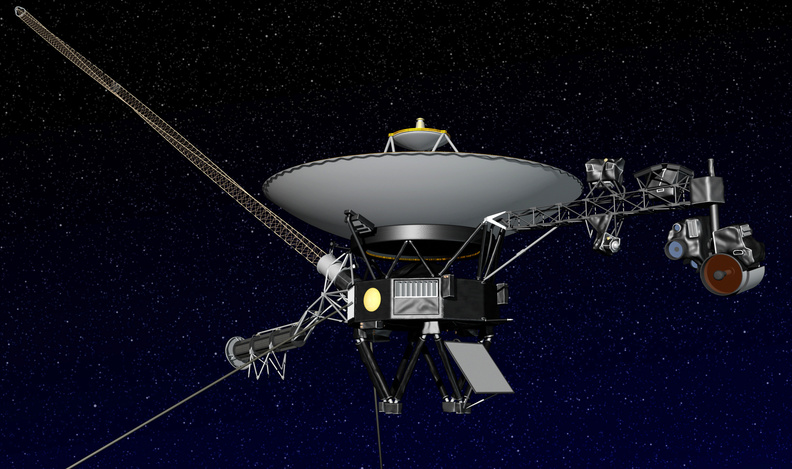LOS ANGELES – NASA’s Voyager 1 probe has left the solar system, boldly going where no machine has gone before.
Thirty-six years after it rocketed away from Earth, the plutonium-powered spacecraft has escaped the sun’s influence and is now cruising 11.5 billion miles away in interstellar space, NASA said Thursday.
And just in case it encounters intelligent life, it is carrying a gold-plated, 1970s-era phonograph record with multicultural greetings from Earth, photos and songs, including Chuck Berry’s “Johnny B. Goode,” along with Beethoven, Bach, Mozart and Louis Armstrong.
Voyager 1 is drifting in a part of the universe littered with the remnants of ancient star explosions.
It will study exotic particles and other phenomena and will radio the data back to Earth. It takes about 17 hours for its signal to reach Earth.
While Voyager 1 may have left the solar system as most people understand it, it still has hundreds, perhaps thousands, of years to go before bidding adieu to the last icy bodies that make up our neighborhood.
At the rate it is going, it would take 40,000 years to reach the nearest star, Alpha Centauri.
Voyager 1’s odyssey began in 1977 when the spacecraft and its twin, Voyager 2, were launched on a tour of the gas giant planets of the solar system.
After beaming back dazzling postcard views of Jupiter’s giant red spot and Saturn’s shimmering rings, Voyager 2 hopscotched to Uranus and Neptune. Meanwhile, Voyager 1 used Saturn as a gravitational slingshot to power itself past Pluto.
Send questions/comments to the editors.



Success. Please wait for the page to reload. If the page does not reload within 5 seconds, please refresh the page.
Enter your email and password to access comments.
Hi, to comment on stories you must . This profile is in addition to your subscription and website login.
Already have a commenting profile? .
Invalid username/password.
Please check your email to confirm and complete your registration.
Only subscribers are eligible to post comments. Please subscribe or login first for digital access. Here’s why.
Use the form below to reset your password. When you've submitted your account email, we will send an email with a reset code.